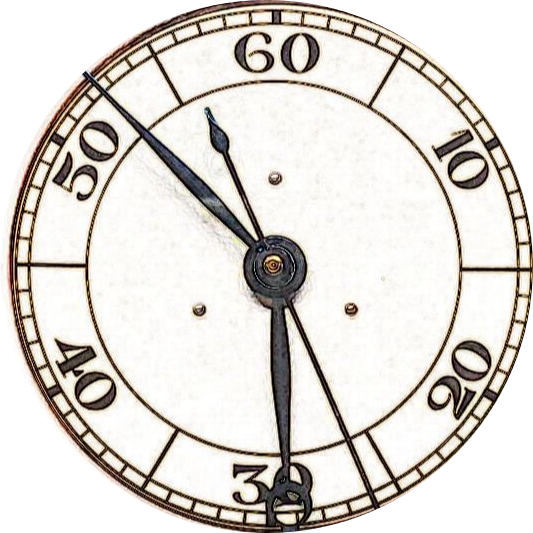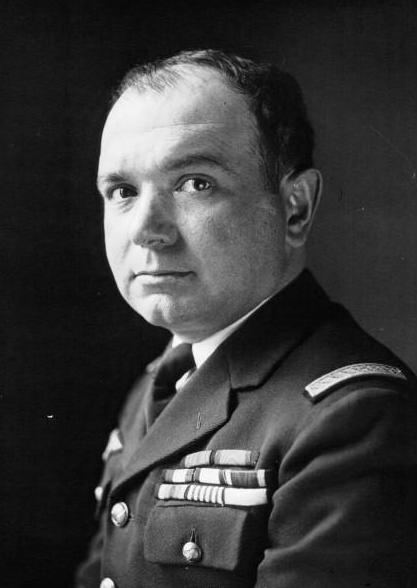
Captain Maurice Rossi, Adjutant of the French air Ministry learned how to fly in the military in 1919. While too young to serve in the First World War, he fought in the aftermath that followed; brought down behind enemy lines on two separate occasions. During World War One Syria broke away from Ottoman rule by French mandate.
This was a long and violent battle, with Ottoman governor Jamal Pasha tightening his control over Syria. Those against Ottoman rule were arrested and often killed. Syria pushed forward to become independent as a parliamentary republic on the 24th of October 1945, becoming a founding member of the United Nations. This act ended the previous French mandate but troops did not pull out of Syria until April 1946.
Rossi was a part of this conflict, helping those who fought for Arab independence. For his service he was awarded both the Croix de Guerre and Medaille Militaire. These were awarded for acts of bravery and heroism in the face of an enemy force. The Medaille Militaire is the third highest award offered by the French Republic.
Born in 1901, Rossi learned to fly in 1919, at just 18. He was renowned as a record breaking distance flier as early as 1927. He was an exceptional navigator and radio operator with an aptitude for flying blind. It was these an many other skills that earned him a place on the Longines Honor Roll.
During his 1933 New York to Syria hop the big Bleriot monoplane, Joseph Le Brix, was decked out with navigation technology but it was learned skill that was crucial to these early fliers.
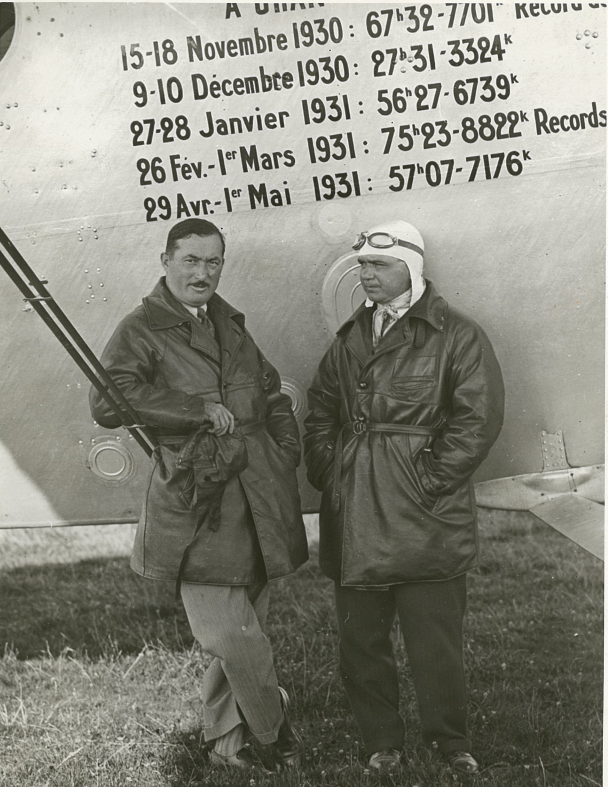
Wise fliers in those pioneer days usually used the full moon in their plans and calculations. By leaving early in the morning and figuring on a thirty- to fifty-hour flight they had the aid of the sun and the moon for navigation purposes. And inasmuch as most of these so-called “Early Birds” were not very great celestial navigators and did not know how to handle sextants, they resorted to the more primitive method of spotting their course from hour to hour in accordance with the sun and moon position.[1]
Early Years
Prior to this career defining flight Rossi had made the first nonstop flight from Paris to Oran in 1927. Flying alongside Captine Deve with 1,095 miles covered in 9 hours and 25 minutes, they’d set a new record.
In 1929 Rossi and Joseph Le Brix (who was killed in 1931) attempted to set a new record for a flight to Indo-China. They were injured and stranded in the jungle after an unfortunate forced landing.
By the time Rossi embarked on his seminal 1933 Syria hop with Paul Codos he had clocked 3,000 miles, 500 of those spent flying the Bleriot plane they were to fly.
Record Breaking Flight

In the big Bleriot monoplane, Joseph Le Brix, named after his fallen comrade, the two pilots left Floyd Bennet Field on August 5th, 1933 with ease. They had spent months preparing for the flight and aimed to set a new nonstop distance record from New York to Rayak, Syria.
They were seen soaring above Newfoundland and discovered next over Paris. They dropped altitude near Le Bourget in order to wave to gathered crowds who were there to cheer the passing aircraft. ‘Both men later reported that they had been able to see their wives waving in front of the crowd.’[2] They again climbed onto higher altitudes, setting their sights upon southern Europe.
Rossi encountered some difficult weather over southern Europe but it was nothing that these skilled pilots could not handle. They landed in Rayak, Syria after a flight which spanned 5,657 miles. They had conquered a new nonstop record and made history in 56 hours.
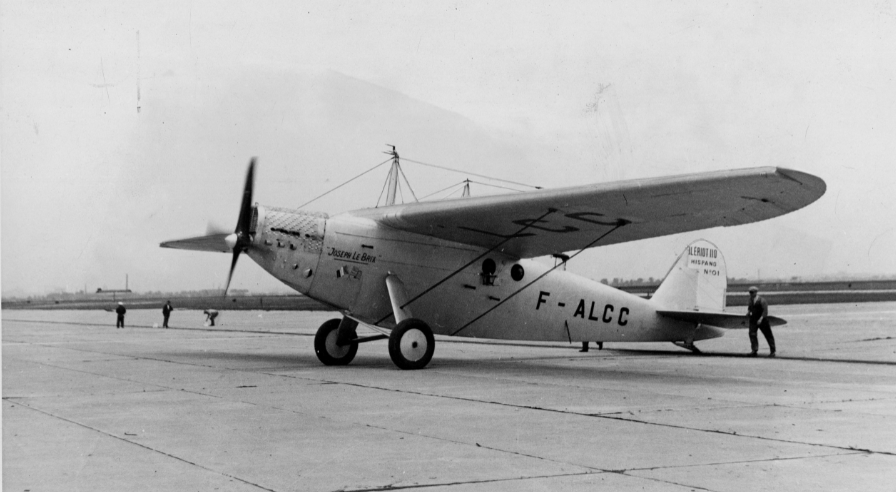
Despite struggling with fuel consumption, often fearing that they would not make the intended destination, they soldiered on. Flying over Europe they ‘”nursed” the engine along, using every known means to obtain the utmost power out of the gasoline steadily draining from the tanks.’[3] Codos and Rossi had made it with little fuel to spare.
The Telegram in the photo reads:
“NEWYORK BEYROUTH SANS ESCALE RECORD DU MONDE EN LIGNE DROTE BATTU EN UTILISANT CASTROL STOP LA LUBRIFICATION DE NOTRE MOTEUR COMME TOUJOURS ASSURE PARFAITMENT AVEC VOTRE HUILE = ROSSI CODOS “
Telegram to Castrol after the flight
Joseph Le Brix Crosses the Atlantic Twice
Rossi and Codos attempted to beat their own record just one year later but were forced down in New York due to a badly damaged propeller. The plane shook violently for 1,600 miles over the Atlantic Ocean with no choice but to continue on until reaching the first available airstrip. They dumped 800 gallons of fuel during landing and despite major worries over their safety, made it onto the airfield without difficulty.
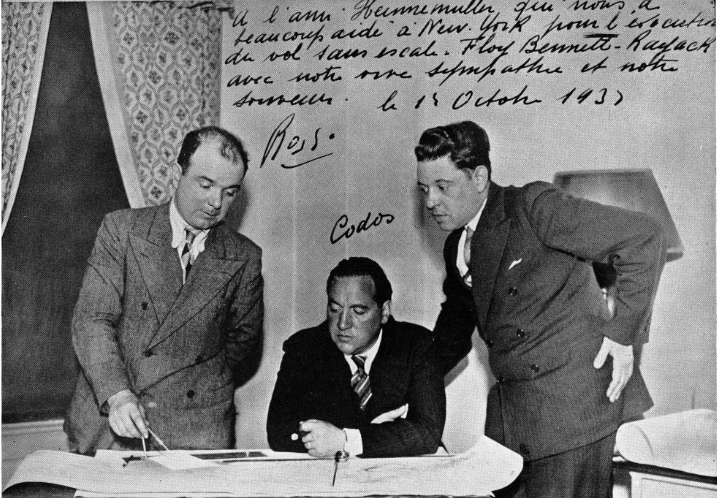
They had intended to fly 8,000 miles from Paris to South America but opted for an emergency landing in New York. After inspecting the propeller it is well that they did, as the damage could well have cost them their lives.
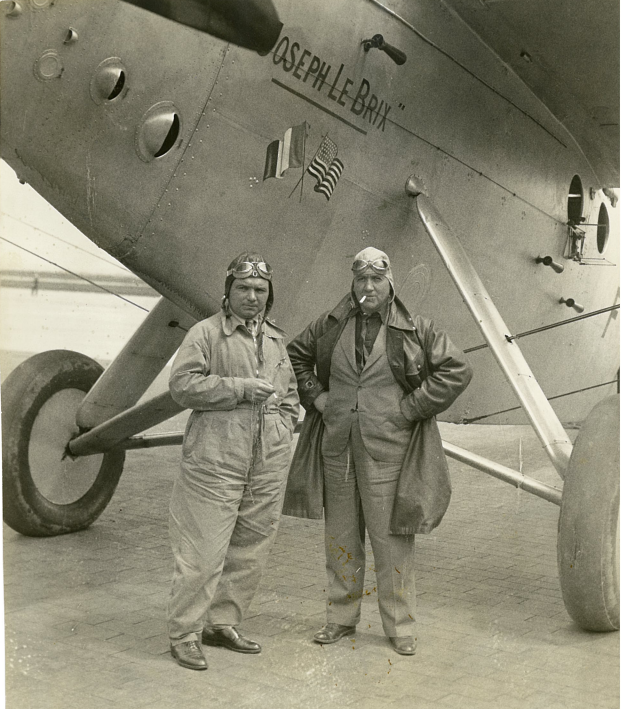
Despite not reaching their target they were offered a warm welcome in New York. The two pilots performed a good will tour of the French populated areas across America and Canada. Both men were decorated by President Franklin Roosevelt.
In 1935 Rossi and Codos attempted another nonstop distance flight, this time from France to South America. This was the first attempt of its kind and they expected to drop Airmail upon reaching their final destination. Unfortunately, they developed engine troubles over the South Atlantic and had to land unexpectedly on the Cape Verde Islands.
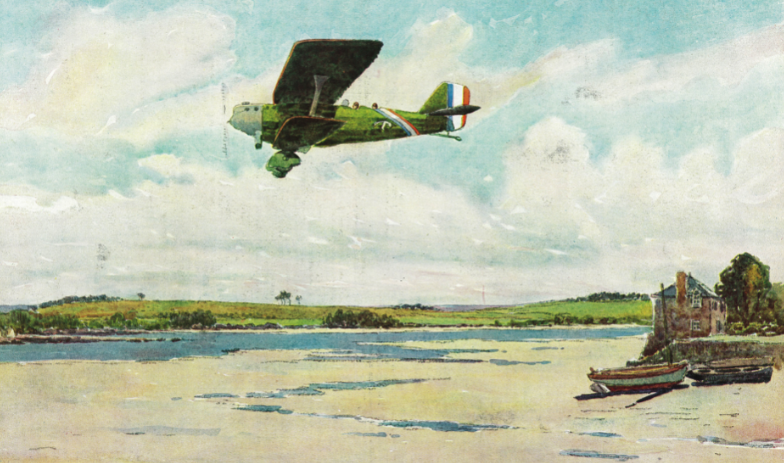
This was to be the last defining flight for the Joseph Le Brix, a faithful bird that had spanned the skies for many years, bringing Rossi and Codos international recognition.
None more memorable than the 1933 flight where Rossi displayed his exceptional skill as an aviator and navigator. They were trailblazers in the field, bringing France onto the international stage of aviation.
Footnotes
- John P.V. Heinmuller, ‘XIV Paul Codos and Maurice Rossi’, Man’s Fight to Fly, (New York: Aero Print Company, 1945), pp. 193.
- John P.V. Heinmuller, ‘XIV Paul Codos and Maurice Rossi’, Man’s Fight to Fly, (New York: Aero Print Company, 1945), pp. 195.
- John P.V. Heinmuller, ‘XIV Paul Codos and Maurice Rossi’, Man’s Fight to Fly, (New York: Aero Print Company, 1945), pp. 195.
Bibliography
Heinmuller, John P.V. ‘XIV Paul Codos and Maurice Rossi’, Man’s Fight to Fly, (New York: Aero Print Company, 1945).
